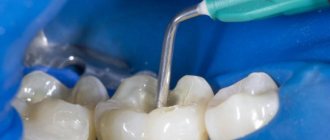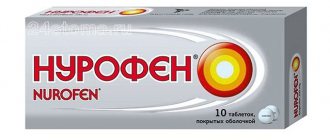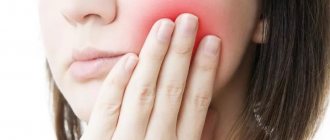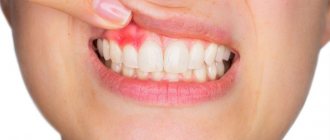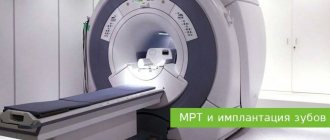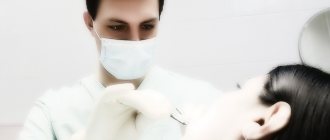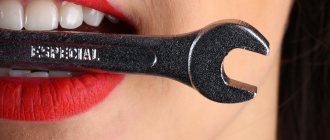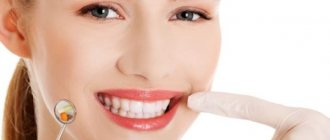Depulpation of a dental element is a procedure that allows you to kill a painful nerve that worries the patient. This manipulation requires the use of special painkillers, one of which is arsenic. To necrotize the dental nerve, arsenic paste is placed into the canal. To achieve the desired effect, the product must be kept for a certain time. Therefore, it is very important to know how much arsenic should be kept in the dental element.
Application in dentistry
Arsenic paste is used in the treatment of pulpitis for the purpose of analgesic effects on the pulp. However, in this case there are indications and contraindications.
Arsenic must be used:
- when a patient may have an allergic reaction to an anesthetic drug;
- if the anesthetic drug used does not have the maximum effect;
- there is not enough time for the anesthetic drug to take effect;
- if the patient has recently suffered a heart attack;
- the patient has hypertension;
- the patient is under the influence of alcohol.
Contraindications:
- when the patient has an allergic reaction to arsenic or anesthetic drugs that contain arsenic;
- if a child under three years old needs dental treatment;
- tooth roots are not sufficiently formed;
- if the patient is diagnosed with glaucoma;
- when the patient has pathologies of the genitourinary system;
- perforation of the roots of dental elements was diagnosed.
You can find out how treatment with arsenic works here:
Video - Specialist about arsenic in teeth
Reviews
Arsenic is a dangerous and highly toxic substance. But it is still used in dental treatment, even though safer drugs already exist.
In many cases, it is the only possible and affordable way to get rid of severe toothache. But the feasibility of its use must be accurately calculated by the dentist.
You can share your impressions about the experience of dental treatment using arsenic by leaving a comment on this article.
If you find an error, please select a piece of text and press Ctrl+Enter.
Stages of treatment
The initiation of therapy must necessarily begin with an examination using an x-ray. Then, if the pathology is confirmed, the specialist opens the carious cavity and removes dead tissue. Arsenic paste is placed into the cleaned channel. The final steps include filling the dental element with a temporary filling. The doctor determines the duration of arsenic exposure. The second visit is characterized by the removal of arsenic from the tooth and the dead nerve is removed. This manipulation is absolutely painless.
Brief information about this tool
Arsenic is the 33rd chemical element of group 15 from D. Mendeleev’s periodic table, a semimetal, quite brittle, steel-colored with small greenish inclusions. Arsenium is its exact chemical name. This is a toxic substance; the toxic dose for humans is only 5 mg.
It has been used in dentistry since the beginning of the 19th century. It helped to quickly cope with the pain, but killed all the soft tissue. At that time, doctors did not yet know how harmful the substance was to humans and did not calculate its dose.
Arsenic continues to be used to this day in dentistry, but no longer in its pure form. Arsenic anhydride (AS2O3) is used. It is a component of a nerve devitalization paste, in which its amount is minimal.
How long should you keep arsenic paste in your tooth?
It is very important to determine how much arsenic should be kept. There are a lot of criteria here - the patient’s age, the drug used, pulp indicators (the drug is placed on a closed pulp or an open one). The average duration of exposure to arsenic on a nerve is 1 day. If multiple treatments are necessary, the doctor will increase the duration of action to two days.
If we are talking about the treatment of dental elements of children, then the extraction of arsenic should occur no later than 16 hours later.
Attention! There are modern medicines that contain arsenic. Their effect on the diseased nerve can be increased to five days.
Action
Arsenic has a strong necrotic effect. As a representative of protoplasmic poisons, it reacts with sulfhydride (thiol) amino acids. In them, it completely blocks enzyme systems and displaces hydrogen. The result of this effect is the loss of the oxidative properties of amino acids.
This action of the anhydride leads to the development of hypoxia in the tissues. Even a small amount of it, when targeted, causes vasoconstriction in the pulp, the formation of a blood clot and, as a result, cessation of blood circulation.
At the same time, irreversible changes occur in the nerve fibers, leading to blocking of impulses and their subsequent death.
It is precisely this effect of arsenic on a painful pulp that is used in situations where it is impossible to do without eliminating the nerve.
Let's find out how to rinse a wound after tooth extraction. We looked at both medications and folk remedies. And here we will name ways to kill the dental nerve at home.
Recommendations
Since arsenic paste is poisonous, safety rules must be followed. It is important to come to your next appointment at the time agreed with your doctor. First of all, follow this list of rules:
- Maintain the integrity of the temporary filling. Initially, the filling is made airtight, so arsenic acts exclusively on the diseased nerve. If the integrity of the filling is damaged, arsenic comes out and affects the surrounding tissues. As a result, an inflammatory process occurs, which is accompanied by painful sensations.
- Do not exceed the period of exposure to arsenic.
- The specialist should not make a mistake with the dosage of the product.
What to do if you experience discomfort?
Often the patient may experience discomfort when exposed to arsenic, to minimize anxiety, it is recommended:
- rinse your mouth with soda solution if there is a sour taste. In this way, the acidic effect can be neutralized and burns can be avoided;
- after arsenic is introduced into the tooth, pain may occur; a glass of warm milk will be required to relieve it. To do this, hold the milk in your mouth for a few seconds, and then drink the drink completely.
Reference! Milk, namely the protein it contains, quickly removes arsenic from the body.
Contraindications
The following conditions are contraindications for the use of arsenic-based drugs:
- children's age up to 1.5 years;
- allergy to arsenic and its components;
- lack of fully formed roots or reabsorbing roots;
- when it is impossible to completely clean the canals (their curvature, fusion, blocking with tartar);
- artificial hole in the root (disconnection or perforation);
- high eye pressure (threat of glaucoma);
- not completely sanitized and cleaned channels;
- diseases of the urinary organs;
- state of pregnancy or breastfeeding.
The use of arsenic paste is not allowed for pregnant women and nursing mothers. In these situations, even the minimum content of poison can be unpredictable and toxic for the child’s body.
The use of arsenic is also undesirable for children. They often break the temporary filling themselves, and the toxic medicine enters the body. This can cause intoxication of the delicate child's body.
Arsenic is still commonly used by dentists. And its use can be very justified. An experienced doctor using this medicine has successfully relieved hundreds of patients from unbearable pain. The main thing is to cure the tooth without unnecessary suffering and not spoil your health. Take care of yourself and smile more often!
Sources used:
- Knizhnikov V.A., Bochkarev V.V., Zimina L.N., Marchenko E.N., Rubtsov A.F., Serebryakov L.A. Arsenic // Big Medical Encyclopedia
- Anesthesia in dentistry / S.F. Gritsuk. - M.: Medical Information Agency (MIA), 1998.
- Therapeutic dentistry. National leadership / L.A. Dmitrieva. - M.: GEOTAR-Media, 2015.
How harmful is arsenic?
Since this product is a type of poison, it is used for dental purposes in minimal dosages, with strict adherence to safety rules. Proper use of arsenic minimizes harmful effects.
If the timing of exposure to arsenic is violated, it can penetrate the tissue structure, accumulate there and cause complications. If some of the arsenic gets into the oral cavity, then a protracted inflammatory process should be expected.
With incorrect dosages of arsenic, the following consequences are observed:
- Dentin begins to turn black.
- Swelling and inflammation of the pulp occurs.
- Toxic effects on the body.
- Inflammatory process of periodontal tissue.
- Osteonecrosis.
Very often, the patient may ignore the deadlines indicated by the specialist. As a result, arsenic periodontitis occurs, the treatment of which requires a long time. When exposed to arsenic, tissue necrosis cannot be ruled out. If the patient experiences increased sensitivity, toxic damage to the intestines and liver subsequently occurs.
Video - Treatment of pulpitis
What happens if you hold it for too long?
Arsenic is practically not used for depulpation in pregnant women and children
Since the substance is aggressive and toxic, with prolonged use it will not only deaden the nerve, but also begin to kill healthy tissue - teeth, roots, gums.
The same applies to neighboring areas. If you keep arsenic for too long, there is a risk of:
- Poisoning of the body, disruption of the digestive system and liver.
- Periodontal inflammation.
- Gum death.
Arsenic extraction process
In the depulpation procedure, it is very important to remove arsenic in a timely manner. If you ignore this indicator, you can get the above complications.
Advice! When the patient is unable to visit the doctor at the appointed time, the arsenic must be extracted independently. To do this, wash your hands and disinfect them in advance. Then break the integrity of the seal and remove the arsenic. The danger of manipulation is that it can be swallowed. Therefore, procedures should be carried out with extreme caution. Upon completion of the manipulation, the oral cavity must be rinsed with a soda solution. In this case, visit the dentist as soon as possible.
When is it necessary to remove a nerve?
Dentists are trying their best to save the tooth, but, unfortunately, this is not always possible. For example, in case of extensive caries, it is necessary to resort to removing the nerve of the tooth. The nerve (pulp) is responsible for the sensitivity of the unit. Pain and other unpleasant symptoms arise precisely because of inflammation of the pulp. The following conditions are considered the main indications:
- Advanced periodontitis.
- Deep caries affecting the internal tissues of the tooth.
- Acute pulpitis.
Also, this manipulation is indicated in cases where crowns, bridges, veneers and other fixed prostheses are to be installed. First of all, this is done with the intention that the tooth does not get sick under the artificial structure. In this case, the unit is considered dead, but continues to perform its functional duties.
Use of arsenic for pregnant women
If a woman is a nursing mother or is pregnant, then the use of products containing arsenic is strictly prohibited. This is due to the toxic effect on the baby. When a woman is short of pregnancy, it is important to warn the dentist about the situation. Modern dentistry is rich in safer medications that are approved for use by pregnant women.
About the composition of arsenic paste
| Constituent component | Percentage % |
| Tannin | 1 |
| Antiseptic | 5 |
| Painkiller | 30 |
| Arsenous acid | 35 |
It is important! Additionally, auxiliary substances can be added to the paste, which are necessary for preparing a small dose.
The patient must remember that in no case should the duration of exposure to arsenic on the diseased nerve be exceeded, because this is fraught with dangerous consequences.
